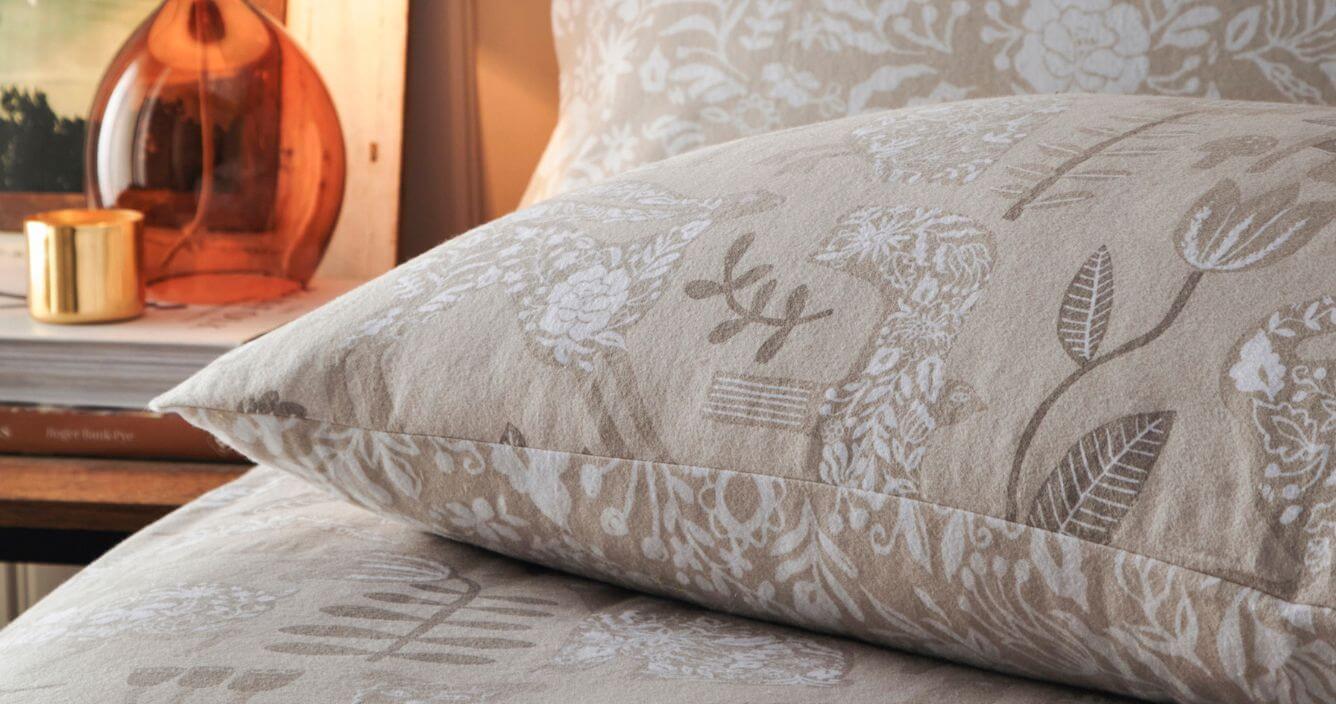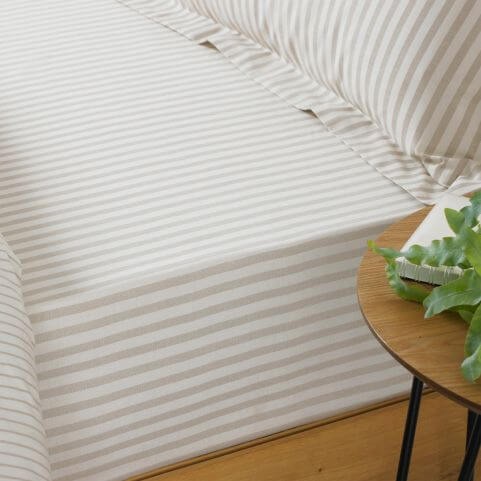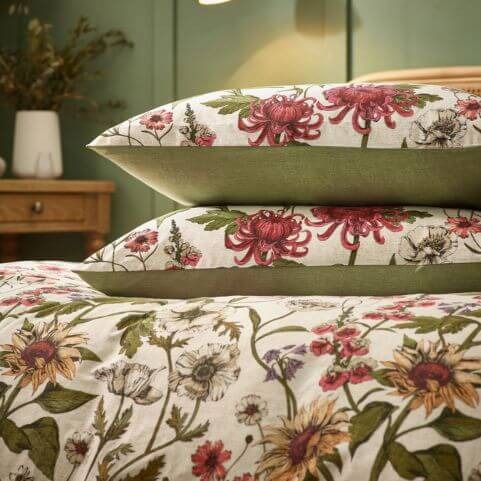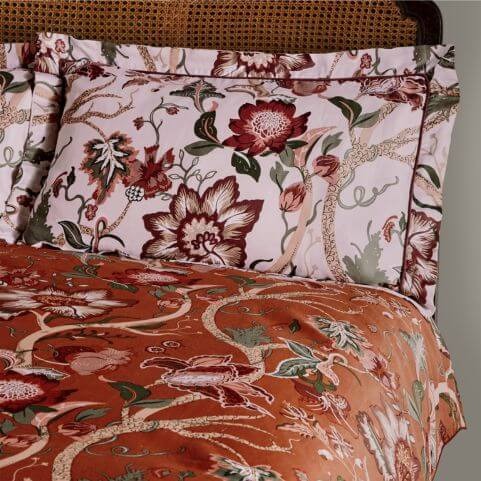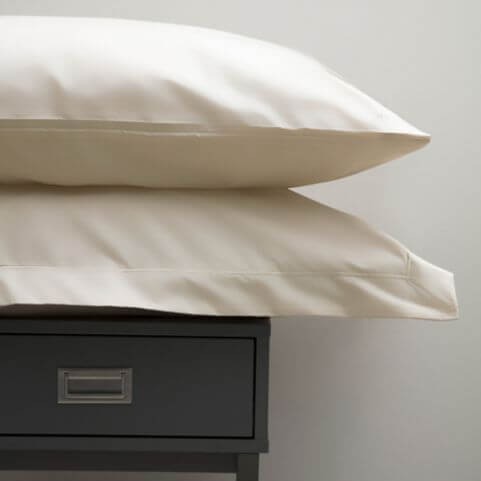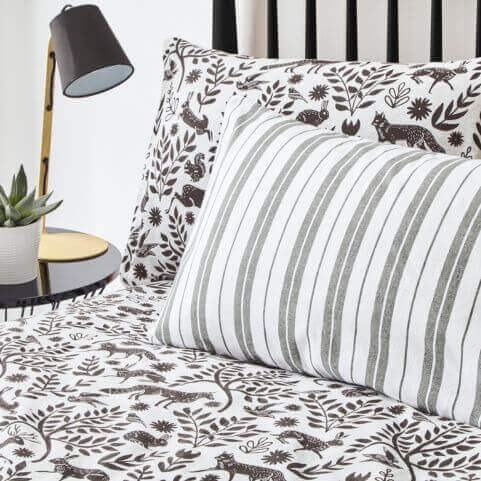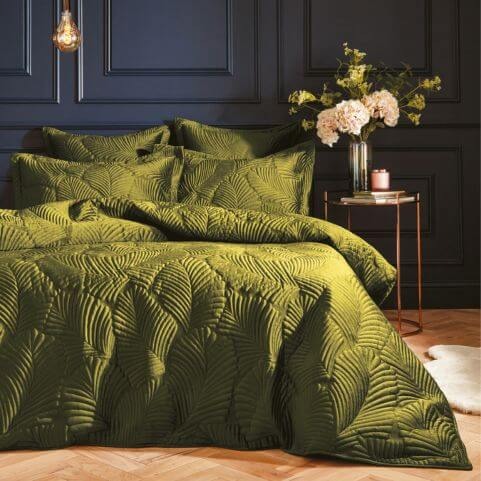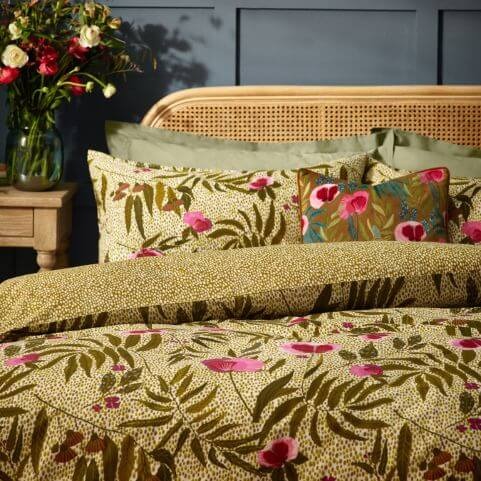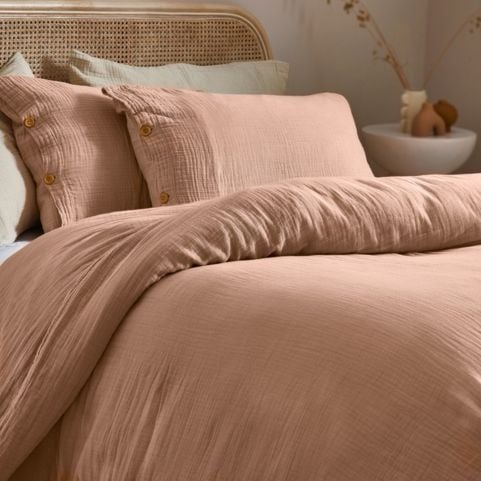what is the best material for bedding? weave got the answers.
Ever since humankind left treetop nests and makeshift grass dwellings behind, we’ve been debating which material is best for sleeping on. Today, luxury bedding materials like silky soft cotton and linen are commonplace – things we take for granted rather than understand and value. As we’ll find out, however, the quality of our bedding fabrics is certainly not something we should be sleeping on.
Repeated studies have found that the type of bedlinen we use has a direct effect on our sleep quality and health, so it’s about time we started showing our sheets some respect. Whether you’re struggling to snooze on your current bedding, or fine-tuning your sleep sanctuary down to the last detail – here’s everything you need to know about the very best of bedding materials.
First things first, it’s important to clarify that no single bedding material rules them all. What’s considered the ‘best’ bed linen will vary massively from person to person, and what works wonders for others might leave you tossing and turning until you’re blue in the face.
"The truth is that no single bedding material can be considered the best" advises Suzi, Design Manager and resident bedding expert at furn.com. "Your skin type, general body temperature and the climate you’re sleeping in all have a big effect on what bedding fabric you should choose".
A quilted velvet bedding set, for example, might satisfy a chilly sleeper spending winter in the Scottish Highlands – but you can bet they’ll be opting for something lighter once summer rolls around.
Your skin type, how much you sweat, your general body temperature and the climate you’re sleeping in all have a big effect on what bedding you should choose – and that’s before we even talk about your personal preference.
If popularity’s anything to go by, cotton’s a shoo-in for the title of best bedding material. It’s used far and wide, from curated master bedrooms to luxury hotel bedding designed for five-star sleeping. The benefits of cotton bedding are plentiful, from breathability and moisture-wicking to its splendid softness and impressive durability.
But how, exactly, has cotton become the ‘one to beat’ in the world of bedding fabrics?
Cotton bedding is made from the fluffy natural fibres that surround the seeds on cotton plants. The longest and finest cotton fibres are collected and spun into yarn, from which a variety of cotton weaves can be created.
This large selection of weaves is another reason for cotton’s popularity, allowing you to tailor your bedding’s finish and feel to your preference. As Suzi explains, "one of the best things about cotton bedding is that it gives so much room to personalise. Percale sheets are light and crisp, sateen is glossy, smooth and luxurious. You've even got the option of upgrading to Egyptian cotton if you're interested in proper luxury sleeping".
Here are some of the most popular types of cotton bedding:
percale.
Percale cotton uses a classic ‘criss-cross’ weaving pattern of one thread under, one thread over. The result is a crisp, matte finish that’s cool to touch and refreshingly breathable.
If you’re a fan of fresh hotel sheets, cotton percale might be the best bedding material for you.
sateen.
Sateen cotton is made with a one-under and three or four-over weave pattern. This means that more threads are present on the surface of the fabric, resulting in a smoother, heavier finish.
While less breathable than standard cotton weaves, sateen is thicker and glossier – making it the best option if you’re looking for a luxury feel or tend to get chilly during the night.
Egyptian cotton.
The epitome of sleeping luxury, Egyptian cotton comes from a specific cotton plant that only grows in Egypt and certain subtropical regions. Special climate and soil conditions allow the plant to grow larger at a slower rate, resulting in remarkably long fibres that create a premium fabric finish.
Egyptian cotton takes all the benefits of cotton – breathability, moisture-wicking, durability – and elevates them to luxurious new heights. If you’re looking for a next-level sleep experience that lasts a lifetime, Egyptian cotton bedding is always a worthy investment.
Brushed cotton, you might have guessed, is cotton that’s been treated with a mechanical brushing process during manufacturing. Fine-tooth metal brushes are used to lightly rub the fabric’s surface, raising the fibres and creating a soft, woolly finish.
Fluffier and warmer than standard cotton – while still providing the sought-after benefits of breathability, moisture-wicking and hypoallergenic qualities – brushed cotton bedding is ideal for comfortable sleeping in every season.
While generally not the number one choice for luxury, bedding made from synthetic fibres like polyester and microfibre shouldn't be overlooked.
"Polyester bedding can be a perfect fit for many people, especially if you tend to feel the cold more" Suzi explains. "Its tight weave and ability to trap heat make polyester a very warming fabric, while polycotton blends give you the best of both worlds. Synthetic fabrics are also hypoallergenic by design, so they're a great option for people with allergies".
Although less breathable than cotton or linen, polyester is wrinkle-resistant, easy to clean and more affordable than most bedding materials – making it a great fit for busier households.
If you’re looking for a happy medium, polycotton takes the best of cotton, the best of polyester, and brings them together in one well-rounded fabric.
Polycotton bedding has the softness of cotton, backed up by the easy-care convenience and impressive durability of polyester. Easy to clean, quick to dry and naturally wrinkle-resistant – it’s the ideal option if you want the ease of synthetics with the softness of cotton.
While cotton and polycotton are both great bedding materials, there are some differences between the two that might sway you in one direction or the other.
100% cotton sheets are slightly softer, due to their natural makeup and ability to translate a higher thread count. Synthetic threads can be made purposefully fine in order to manipulate the final thread count, so pure cotton sheets are a safer bet if you’re prioritising softness.
Polycotton bedding beats cotton in terms of durability, however, as its plastic-like fibres are well protected against rips and tears. The bedding in hospitals and other commercial buildings is often made from polycotton for this reason, keeping sheets in immaculate shape through years of repeated use and washing. 100% cotton bedding is still impressively durable, but might turn out to have a slightly shorter lifespan than polycotton sheets.
One of cotton bedding’s greatest qualities is its breathability, so it’s no surprise that polycotton sheets don’t quite meet the same standard. The inclusion of polyester threads means that polycotton is slightly less airy than pure cotton. It also lacks absorbency, meaning it won’t wick away sweat during the night as effectively as cotton does.
If you’ve spent much time researching what is the best material for bedding, you’ll have come across quite a bit of talk about linen. Known as one of the finest bedding fabrics there is, linen is celebrated for its lifelong durability, serene softness and ability to regulate your body temperature year-round.
Linen fabric is made from fibres found in the stems of flax plants. The stems are harvested, processed to remove leaves and seeds, and mechanically broken up to extract the inner bark fibres. These fibres are then combed to separate out the long ones, which are used to create soft linen products like bedding and clothes.
When searching for the best bedding material, people often struggle to decide between linen and cotton. The truth is that there’s not much to separate the two, and the right option depends entirely on you and your preferences.
Linen looks luxuriously scrunchy, naturally wrinkled and gets softer with every wash – while cotton is a classic, well-rounded fabric that gives you plenty of choice in terms of weaves and finish.
